 Procedure for sales entry (Summary method)
Procedure for sales entry (Summary method)
 Outline
Outline
Select sales object data from among data already processed for shipping and process for sales.
 1. Screen display method
1. Screen display method
-
Select [Sales Control] → [Sales
Control] → [Entry].
-
Select [Sales Entry (Summary Method)] from menu option.
→ The [Sales entry (Summary method)] screen is displayed.
 2. Searching conditions entry
2. Searching conditions entry
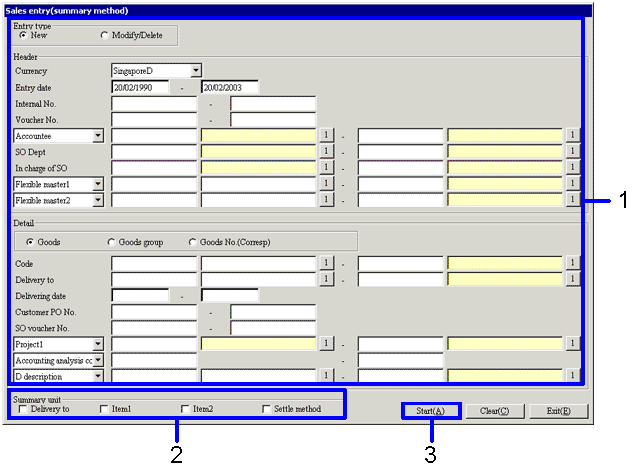
→To Menu Reference
-
Enter the searching conditions for the sales data.
Select "New" to specify data for which a new sales is to be processed.
Select "Modify/Delete" to modify data for which a sales has already been processed.
-
Select the summary unit. (Displayed only when the "New" option under entry type is selected.)
Searched data is grouped by specified unit and displayed in list form.
-
Click the "Start (A)" button.
→ The [Sales entry list] screen is displayed.
Only data already processed for shipping is included as objects of the search.
 3. Select sales object
3. Select sales object
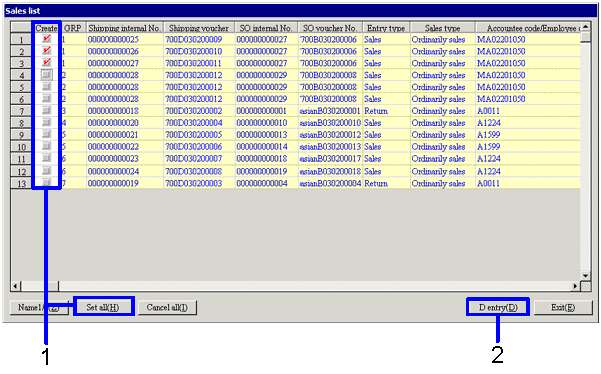
→To Menu Reference
-
Activate the "Create" checkbox for the data used to create sales data.
Click the "Set all (H)" button to activate the checkboxes for all data.
Note, however, that creating and processing bulk vouchers is only possible for data with identical GRP codes. When sales vouchers are compiled, data with identical GRP codes will be processed on the same sales voucher.
In the case that checkboxes for some data with the same GRP code are activated while other checkboxes are not, only data that has been activated will be contained on a single voucher.
-
Click on the "D entry (D)" button.
→ The [Sales entry] screen is displayed.
 4. [Header] tab entry
4. [Header] tab entry
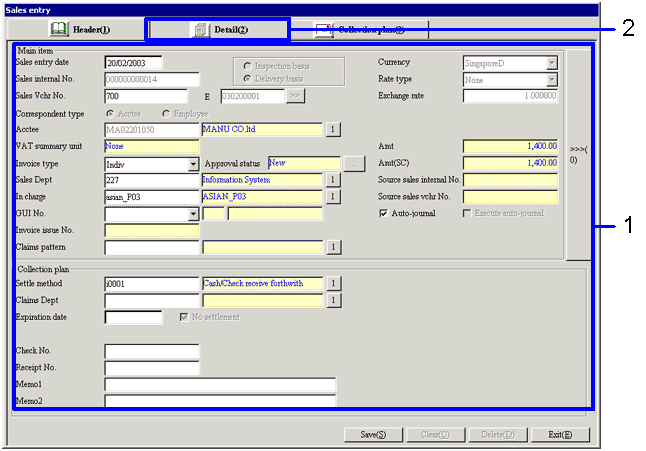
→To Menu Reference
-
Verify sales data.
Activate the "Auto-journal" checkbox to include data in auto journal processing.
Activate the "No settlement" checkbox to exclude data from settlement processing.
-
Click on the [Detail] tab to verify [Details] data.
 5. [Detail] tab entry
5. [Detail] tab entry
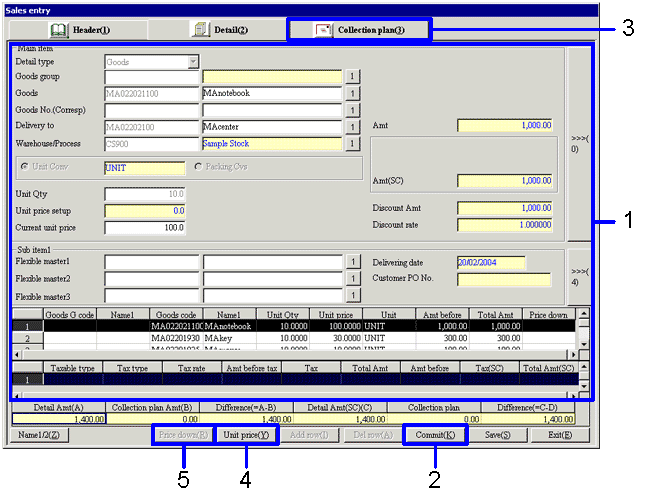
→To Menu Reference
-
Verify sales data. Verify "unit prices" and "discount rates" contained in individual detail rows.
-
Click on the "Commit (K)" button.
→ The detail row is recalculated.
-
Click on the [Collection plan] tab to verify [Collection plan] data.
-
Click on the "Unit price (Y)" button to display the [Refer unit price history] screen. Use this screen to refer to past shipping and discount histories for targeted correspondents.
-
Clicking the "Price down (R)" button displays the [Price down/Appreciation] screen. Use this button to cut/appropriate price for all vouchers or individual goods, or to enter charges. You can also go to "Current unit price" under the [Detail] tab to cut/appropriate price for individual goods.
 6.[Collection plan] tab entry
6.[Collection plan] tab entry
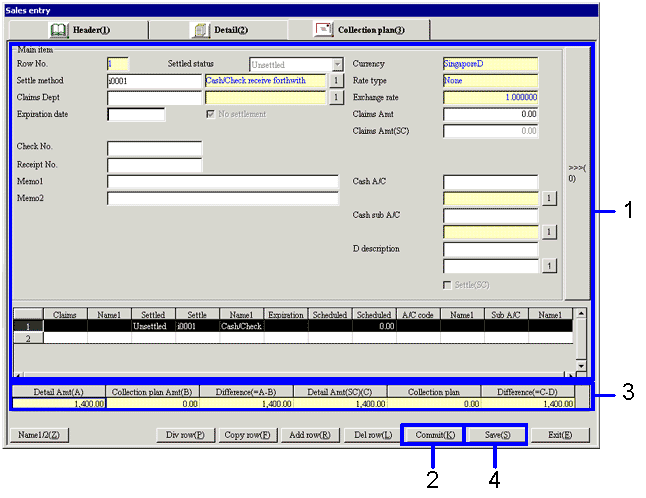
→To Menu Reference
-
Verify sales data.
Entered (and saved) vouchers can be cancelled in the [Sakes entry (revise)] menu.
-
Click on the "Commit (K)" button.
→ The detail row is recalculated.
-
Enter amounts so that the "Difference (=A-B)" and the "Difference (=C-D)" columns in the amount display spread both equal 0.00.
Data is not saved even after clicking on the "Save (S)" button if the "Difference" columns do not equal 0.00.
-
Click on the "Save (S)" button.
→ Sales data is registered.
 7. Cancel voucher
7. Cancel voucher
Entered (and saved) vouchers can be cancelled in the [Sakes entry (revise)] menu.
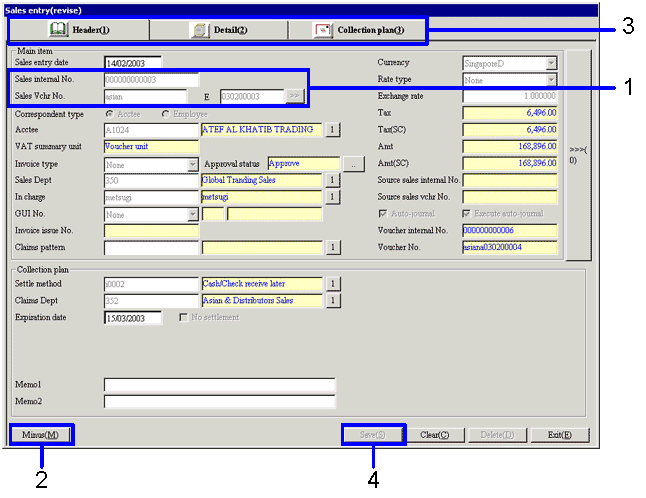
→To Menu Reference
- Display target voucher.
Specify voucher to be cancelled with "Internal No." or "Invoice No."
→ Specified voucher is displayed.
- Click on the "Minus (M)" button.
Amount is now displayed in negative values.
- Verify the data under the [Details] and [Collection plan] tabs and modify as necessary.
- Click on the "Save (S)" button.
![]() Procedure for sales entry (Summary method)
Procedure for sales entry (Summary method)![]() Outline
Outline![]() 1. Screen display method
1. Screen display method![]() 2. Searching conditions entry
2. Searching conditions entry
![]() 3. Select sales object
3. Select sales object
![]() 4. [Header] tab entry
4. [Header] tab entry
![]() 5. [Detail] tab entry
5. [Detail] tab entry
![]() 6.[Collection plan] tab entry
6.[Collection plan] tab entry
![]() 7. Cancel voucher
7. Cancel voucher